| |
Jesuit
Papal Assassins Unmasked at Last!! |
|
"Thou
shalt not kill" (murder) (Exodus 20:13).
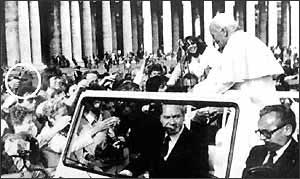
A
hand holding a gun aims from the crowd at Pope John Paul II
as he rides through St. Peter's Square on May 13, 1981, the
Feast Day of our Lady of Fatima. An instant later he was shot.
|
|
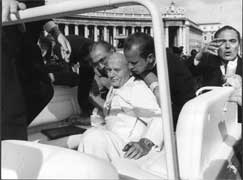
Pope John
Paul II was shot 3 times at point blank range.
|
The Pope was given
poisoned blood transfusions!!
Pope
John Paul II was hit 3 times at point blank range:
"On
May 13, 1981, within three weeks of that private papal conference
(to fire Arrupe), John Paul II was struck by two bullets from the
Browning semiautomatic pistol of paid hitman Mehmet Ali Agca. By mistake,
as it was later explained, the Pontiff was rushed to the Roman hospital
of Gemelli rather than to the special hospital unit organized solely
for papal use. He was given blood from
the public blood bank; the private supply kept in readiness was never
used.
In rapid succession, Pope John Paul
underwent two major operations and suffered the consequences of the
transfusion of impure blood; he contracted a severe case of hepatitis.
At the height of the Pontiff's crisis, on May 28, Cardinal Wyszynski
of Warsaw died. Wyszynski was John Paul's closest friend, and had
made his career." (Malachi Martin, The Jesuits, p. 94).
A
Papal Conference to abolish the Jesuits 3 weeks before shooting!!
Just
3 weeks prior to the assassination attempt, Pope John Paul II had
a meeting with 6 of the most powerful cardinals in the Vatican. The
topic: the forced resignation of the Jesuit general Pedro Arrupe:
"In
some respects, the meeting that convened in the middle of spring 1981
bore the marks of thousands of board meetings going on at the same
moment in every daylight country of the world. Beyond glass-paneled
double doors, a conference between seven men was in progress. A folder
bulging with reports lay in front of each man. At each man's elbow
a full carafe of water topped with a glass was perched. Anyone happening
to glance in might have said that the men gathered there were absorbed
in the sort of hushed but free-wheeling discussion typical of board
meetings everywhere.
But this was not the sort of meeting most people have ever witnessed,
or even glimpsed through shut, glass-paneled doors. This conference
room was on the third floor of the Palace of the Popes on Vatican
Hill. The report folders were red damask and emblazoned in gold with
the Tiara and Keys. Outside the door, a secretary and two Swiss Guards
in traditional uniform were on duty to block all intruders. Seated
at the conference table were the Pontiff of the Holy Roman Catholic
Church and six of his most powerful cardinals, the movers and shakers
of the Vatican, a cameo of its most formidable strength. And
the subject of discussion between them was the life or death of the
Society of Jesus: whether, in other words, the Order headed by Father
General Pedro Arrupe should be allowed to go on as it was, or be reorganized
and reset according to the often-repeated wishes of three Popes, or
be officially done to death by the power and under the authority of
Pope John Paul II." (Martin, The Jesuits, pp.
79-80).
Jesuit
general Pedro Arrupe—the assassin of Pope John Paul II
Spanish
Inquisition Don Pedro Arrupe was the 31st Black Pope to be elected
for LIFE:
| 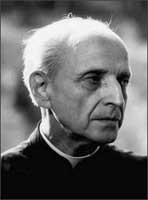
Don Pedro
Arrupe (1907-1991) was the Black Pope or Jesuit general from
1965 to 1981. |
|
Pedro Arrupe was from the Basque region of Spain—the same
part of the country as the first general, Don Ignatius LIEola.
Arrupe
was elected general for life in 1965, and was removed by Pope
John Paul II in 1981.
He was the
first Black Pope ever to be removed from office.
Since the
founding of the Jesuits by Don Ignatius LIEola and Don Francis
Borgia in 1534, many, many White Popes have tried in vain to
curtail the power of the Jesuit generals. ALL of the attempts
met with death by poisoning.
Pope John
Paul II survived the assassination attempt but was greatly weakened
by the 40 hour operation and the transfusions of tainted blood.
|
Moslems and the KGB were blamed for the shooting!!
Usually
in a public shooting assassination attempt, the perpetuator is immediately
killed to hide the real identity of the assassins. In this case (Moslem)
Mehmet Ali Agca was allowed to live because he was an undercover
Jesuit.
The Moslem leaders sent condolences and expressed regret that one
of their own religion should try and kill the Pope.
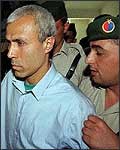
The shooter
(Moslem) Mehmet Ali Agca was not immediately killed (like
Oswald) but taken into custody by the police.
|
|

Yuri
Andropov (1914-1984).
President of the USSR from 1982 to 1984. Head of the KGB from
1967 to 1982. He was poisoned in 1984.
|
Yuri
Andropov was implicated in the assassination attempt through a supposed
BULGARIAN CONNECTION. This gave the Pentagon an excuse to begin a
massive military buildup to avenge the COMMIE Pope killers in the
USSR!!
Attempted
assassination of President Reagan!!
Meanwhile
back in the District of Columbia,
the Fatima Crusade began in earnest. Just weeks before the Pope's
shooting, President Ronald Reagan was shot by another Jesuit assassin
named John Hinckley. Like the Pope, the stricken President became
greatly debilitated. Vice President George Bush (former CIA head),
assumed the duties of President, while the acting was left
to President Reagan.
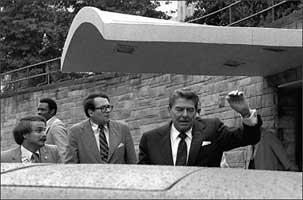
President
Ronald Reagan is hit by a bullet as he enters his limousine
in Washington City.
|
|
On
March 31, 1981, "lone gunman" John Hinckley fired
6 shots at President Ronald Reagan as he entered his limousine
in Washington City.
His Vice
President George Bush (father of George W. Bush) became de-facto
President as Ronald Reagan became the acting President.
The family
of the assassin John Hinckley, Jr., had close ties with skull
and bonesman George Bush.
After the
shooting of the Pope, Reagan and the Pope had something in common,
and they became good friends.
This led
to the establishment of diplomatic relation between the U.S.
and the Vatican in 1984. |
Here
is a quote from the book: George Bush: The Unauthorized Biography:
"A
summary of this material was made generally available through the
Associated Press, which published the following short note on March
31:
The
family of the man charged with trying to assassinate President Reagan
is acquainted with the family of Vice President George Bush and had
made large contributions to his political campaign....Scott Hinckley,
brother of John W. Hinckley Jr. who allegedly shot at Reagan, was
to have dined tonight in Denver at the home of Neil Bush, one of the
Vice President's sons....The Houston Post said it was unable to reach
Scott Hinckley, vice president of his father's Denver-based firm,
Vanderbilt Energy Corp., for comment. Neil Bush lives in Denver, where
he works for Standard Oil Co. of Indiana. In 1978, Neil Bush served
as campaign manager for his brother, George W. Bush, the Vice President's
eldest son, who made an unsuccessful bid for Congress. Neil lived
in Lubbock, Texas, throughout much of 1978, where John Hinckley lived
from 1974 through 1980. "(Tarpley & Chaitkin, George
Bush: The Unauthorized Biography).
Pope
John Paul II rode in a Pope Mobile after the assassination attempt!!
Pope
John Paul II never met the people again except under the highest security.
He had an officer from the Italian Special Forces to coordinate his
security arrangements 24 hours a day, 7 days a week. He even had a
food taster on duty at all times to protect him from the Cup of Borgia!!
| 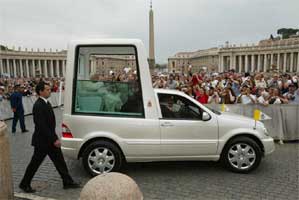
Pope
John Paul II rode in a specially designed bulletproof Popemobile.
|
|
Before
the assassination attempt, Pope John Paul was an avid sports
enthusiast. He enjoyed mountaineering, swimming, walks, tennis
and especially football (soccer)....All of that ended after
the shooting.
The Pope
was a devotee of his own country's mother goddess namely Our
Lady of Czestochowa or the Black Madonna of Poland. He was not
a Fatima Crusader before the shooting.
When he
made a partial recovery in the fall of 1981, he finally fired
Pedro Arrupe. He appointed 2 men: Paolo Dezza and Giuseppe Pittau
to head the Order.
Due to the
enervated Pope, the Jesuits were back in business again in 1983
when they appointed a general of their choosing named Peter
Hans Kolvenbach.
|
Pope
John Paul I was also about to abolish the Jesuits!!
John
Paul I was Pope for 33 days only: from August 26, 1978 to September
29, 1978. Like his predecessor, Pope Paul IV, he disliked taking orders
from the general:

Pope John
Paul I (1912-1979) was Pope for 33 days only.
|
|
Pope
John Paul I—the Patriarch of Venice— was called
the Smiling Pope because of his infectious smile.
As soon
as Albino Luciani became Pope, he ordered an investigation of
the Vatican Bank and its American director Bishop Paul Marcinkus.
He presided over a mammoth financial scandal that ended with
a $244 million Vatican payout to enraged creditors of the Banco
Ambrosiano, an institution linked to Bishop Marcinkus that folded
amid $3.5 billion in red ink.
He went
to bed with a copy of his speech terminating the Jesuits and
was found dead by his housekeeper the following morning.
He was another victim of the Cup of
Borgia!!
|
Here
is a quote from the world's foremost authority on the Vatican in world
politics, Avro Manhattan:
"Soon
after the conclave, the new Pope had a talk with the 20 Cardinals
from Latin America and was deeply impressed by the fact that most
of them supported Liberation Theology. During the previous five years,
he was told, revolutionary, or rather Jesuitical Catholic cells, had
multiplied and were still multiplying very rapidly. Cardinal Arns
of Sao Paulo, Brazil, informed John Paul how there were more than
one hundred thousand basic Catholic revolutionary communities operating
in South America.
These communities, equivalent of revolutionary cells, were called
"communidades eclesiales de base," and operated "in
the gospel spirit" with ideas taken directly from Marxism.
Pope John Paul I was shocked. Although he had heard of Liberation
Theology as a kind of theological abstraction, he had never imagined
its reality to have assumed such vast menacing dimensions.
The CIA, who knew of Luciani's naivete about the problem, feared that
Cardinal Benelli, now his counsellor, might encourage him to support
it. After all, wasn't Liberation Theology born during the pontificate
of Paul VI, and thus, had it not been sponsored by Benelli himself?
Up to then, between 700 and 800 priests and nuns had perished, fighting
alongside the guerrillas. The number was growing as the guerrillas
were multiplying all over Latin America.
Pope John Paul became perturbed about
the whole problem. It was obvious that he had to do something very
drastic about it all. Like neutralizing Father Arrupe and his Jesuitical
battalions, for instance. In Rome as well as in South America. The
new Pope, decided to start dealing with Father Arrupe. Perhaps with
Father Arrupe's dismissal.
But then, before that, Pope John Paul, had to deal with a no less
urgent task; the plots, intrigues and corruption which had been so
rife inside the Vatican itself. The Vatican Bank, its lay and ecclesiastic
associated, plus its shady financial operators. And last, but not
least, with the Curia itself. Many heads would soon be made to roll.
The quicker the better."(Manhattan, Murder in the Vatican,
pp. 129-130).
Here
is another quote from Jesuit author Malachi Martin:
"On the
basis of Paul VI's critical dossier, and with the help of a very
experienced old Jesuit, Father Paolo Dezza, who had been Confessor
to Pope Paul VI and now was John Paul I's confessor, the Pope composed
a hard-hitting speech of warning. He planned to deliver it to the
international assembly of Jesuit leaders and Father General Arrupe
at another of their General Congregations to be held in Rome on
September 30, 1978.
One of the striking features of his speech was John Paul I's repeated
reference to doctrinal deviations on the part of Jesuits. "Let
it not happen that the teachings and publications of Jesuits contain
anything to cause confusion among the faithful." Doctrinal
deviation was for him the most ominous symptom of Jesuit failure.
Veiled beneath the polished veneer of its graceful romanita,
that speech contained a clear threat: the Society would return to
its proper and assigned role, or the Pope would be forced to take
action.
What action? From John Paul's memoranda
and notes, it is clear that, unless a speedy reform of the Order
proved feasible, he had in mind the effective liquidation of the
Society of Jesus as it is today—perhaps to be reconstituted
later in a more manageable form. John Paul I had received
the petitions of many Jesuits, pleading with him to do just that.
The Pope never delivered that speech of warning. On the morning
of September 29, after thirty-three days on the Throne of Peter,
and one day before he was to address the Society's General Congregation,
John Paul I was found dead in bed." (Martin, The Jesuits, p.
44).
Pope Paul VI was
almost stabbed to death by a Jesuit assassin!!
The
previous Pope, Pope Paul VI, also disliked taking orders from the
general, and loud cries arose in the world press that he was incompetent
and should RESIGN....He was almost stabbed to death in Manila. Here
is a quote from Jesuit expert, Martin:
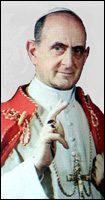
Pope Paul VI (1897-1978). Pope from 1963 to
1978.
|
|
"Paul,
meanwhile, was in desperate need of help of all sorts. His health
had been deteriorating. In an operation that took place on the
fourth floor of the Apostolic Palace in November of 1967, the
Pontiff's prostate gland was removed. Contrary to rumors, there
had been no metastasis. More miseries of the mortal kind came
from the extremely arthritic condition of Paul's legs, and from
his cervical arthritis. That last condition forced him to wear
a stiff collar beneath his robes in order to lessen the pain—a
circumstance that saved his life during his visit to Manila.
The kris wielded by the Bolivian painter
and would-be papal assassin Benjamin Amor y
Mendoza was sharp enough to have severed Paul's jugular veins
as Mendoza slashed twice, once to the right and once to the left
side of Paul's neck. Had it not been for that stiff collar and
the speed of Paul's private secretary, Monsignore Macchi, who
caught Mendoza's arm and slowed its force, Paul would have been
killed. As it was, he was wounded slightly on both sides
of the neck." (Martin, The Jesuits, p. 401.) |
Pope Sixtus
V was assassinated for trying to change the name of the Jesuits!!
If
we go back in history to the time of Don Francis Borgia, we will find
that most of the White Popes were killed, or had an early demise,
because they tried to change or abolish the Jesuit Order. One Pope,
Sixtus V—the "Invincible" Armada Pope—just wanted
to change the name of the Society from the Society of Jesus to "Ignatine
Order." That particular Pope died shortly thereafter:
|
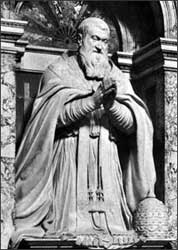
Pope Sixtus V (Pope
from 1585 to 1590). |
|
Here is a quote from
Jesuit expert Malachi Martin:
"Again
in 1590 the same Pope, Sixtus V, decided to change the name "Society
of Jesus" to "Ignatine Order." To use the name
of Jesus in the title of a mere Religious Order, said Sixtus and
many others, was "offensive" to pious ears. "Every
time you name this Society," one Cardinal grumbled, "you
have to doff your hat or bow your head."
Claudio Acquaviva remonstrated with Sixtus, pointing out that
in Jesuit eyes the very name of the Society belonged to the "substantials"
of the Society. Neither he nor a General Congregation of Jesuits
could change the name.
Sixtus maintained his decision, and ordered his own papal officials
to draw up a decree changing the name accordingly.
In the coercive circumstances, Acquaviva did the only thing left
to him: He organized a nine-day
flow of prayers by the young Jesuit novices to ask God's grace
for himself and the whole Society that they submit to the Pope's
distasteful command. Sixtus died on the ninth day. His successor,
Urban, dropped the whole idea." (Martin, The Jesuits,
pp. 231-233).
|
A
"good Pope" is a Pope who obeys his Jesuit general!!
A "good
Pope" is a Pope who fully follows the commands of his Jesuit general.
Pope John XXIII (Pope from 1958 to 1963) was such a "good Pope."
This obedience actually got him on the fast track to sainthood in the
Roman Church as he is now known as "Blessed" John:
|

"Good
Pope" John XXIII
(Pope from 1958 to 1963). |
|
The General at that time was Jean-Baptiste Janssens. Under orders
from his General, Pope John XXIII inaugurated the Trojan horse
ecumenical movement or Vatican Council II.
The Latin
Mass was dumped along with the dogma: there is no salvation outside
the Church of Rome....All religions were now going to get you
to Heaven as long as you were sincere.
Under the
teachings of Vatican II, sincere Communists, Buddhists,
Hindus, Moslems, atheists etc., etc. were all going to Heaven
. . . as long as they were SINCERE!!
Among the
multiplicity of "changes" brought about by Vatican II
was the teaching that Protestants were no longer "heretics"
but SEPARATED BRETHERN!!
|
Vital Links
References
Herman,
Edward S. & Brodhead, Frank. The Rise and Fall of the Bulgarian
Connection. Sheridan Square Press, New York, 1986.
Martin, Malachi. The Jesuits: The
Society of Jesus and the Betrayal of the Roman Catholic Church.
Simon & Schuster, New York, 1989.
Manhattan
Avro. Murder in the Vatican, American, Russian and Papal Plots.
Ozark Books, Springfield, MO. 1985.
Manhattan,
Avro. The Vatican Moscow Washington Alliance. Chick Pub. Chino,
CAlifornia, 1982.
Tarpley,
Webster Griffin, & Chaitkin Anton. George Bush: The Unauthorized
Biography. ProgressivePress.com.
Yallop,
David A. In God's Name: An Investigation into the Death of Pope
John Paul I. Bantam Books, New York, 1984.
Copyright
© 2007 by Niall Kilkenny
Back to Main Menu
|








